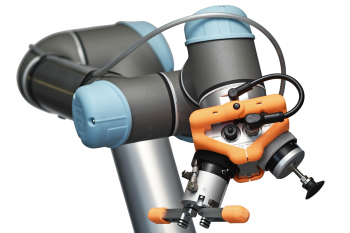 12/12/2019 3 reasons to automate tasks using a robot in the manufacturing sector Anyone who runs their own manufacturing business will usually have a factory or warehouse setting as their main HQ. This allows the goods you make to be manufactured on-site while any admin tasks can be handled in upstairs offices. The manufacturing sector is always looking to work more efficiently and this has seen it use […] |
 06/12/2019 3 main types of industrial robots for use in manufacturing Rapid technological advancements in automation and robotics have seen their adoption into different sectors. The manufacturing industry has been a significant beneficiary of these advancements where robots have been used to increase the efficiency and speed of processes. Industrial robots are classified into different categories based on their mechanical configuration, power supply control, motion control, […] |
 02/12/2019 BAGGING MACHINE Bagging machines can also be called packaging machines. There are primarily used for all kinds of bagging operations, from little packages to distribution packs. Bagging processes include; fabrication, cleaning, filling, sealing, combining, labelling, overwrapping, palletizing. Most packaging operations cannot be done without packaging or bagging equipment. For instance, some packaging requires heat to seal the […] |
 29/11/2019 The most common tasks that pick and place robots perform Pick and place robots have fast become an everyday sight in industry. They are highly beneficial when it comes to performing easy, repetitive tasks. cobots designed to pick up objects and accurately place them elsewhere should be mounted on stable platforms. They then need to be carefully positioned so that they can access any point […] |
 26/11/2019 Cobot vs robot: What are the key differences? When it comes to a cobot and a robot in work settings, many people confuse them or think they are the same thing. As this is still a fairly new technology for most people to understand, this is not unexpected. It is important to note that a cobot is different from a robot in many [...] |
 19/11/2019 Five ways cobots can increase productivity Cobots – collaborative robots – are robots specially designed to work alongside human employees to complete a range of tasks. An increasing number of business leaders are making the move to integrate cobots into their workplace as a means to improve productivity. To help you understand why cobots can boost productivity in this way, we’ve […] |
 30/10/2019 How the automotive industry is benefiting from welding robotics Welding robots in the automotive industry has become a universal application that car manufacturing companies are increasingly using in their daily activities. While robots are also used in other applications such as painting, welding remains one of the main areas where the technology is used. The automotive industry has also not been left behind in […] |
 14/10/2019 Demystifying the biggest myths around collaborative robots Collaborative robots (cobots) have enhanced industrial automation in unprecedented ways through their unique, high-tech, and exciting capabilities. The robots have revolutionised manufacturing by reducing the cost and resources used in various process. Despite the advancements witnessed in the robotic technology, the idea of automation using cobots still elicits false myths and misconceptions, especially from people […] |
|
How robotic technology is changing the agricultural sector Agricultural robots play an important role in agriculture in the 21st century. According to reports, market research has revealed that the robotics market is expected to reach 11.58 billion come 2025. Robots make work easier and faster and they also increase the efficiency of agricultural processes. Countries like Japan which are unable to meet the […] |
 10/09/2019 The future of packaging The unexpected ways packaging automation is changing the industry for the better When we think of automation, especially in factories or industry, we often think of robots as a replacement for people. But when it comes to fields such as packaging, the introduction of automation has done far more than making existing jobs more efficient. […] |
